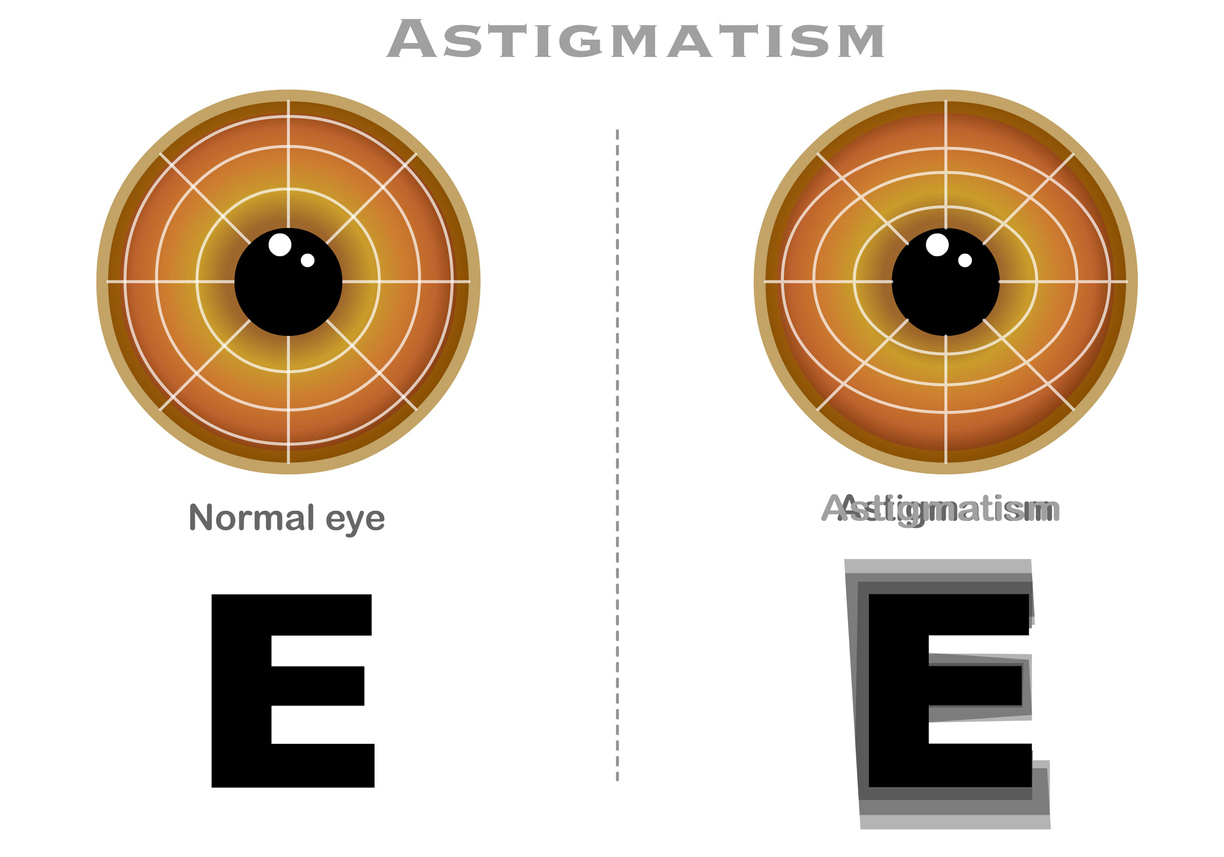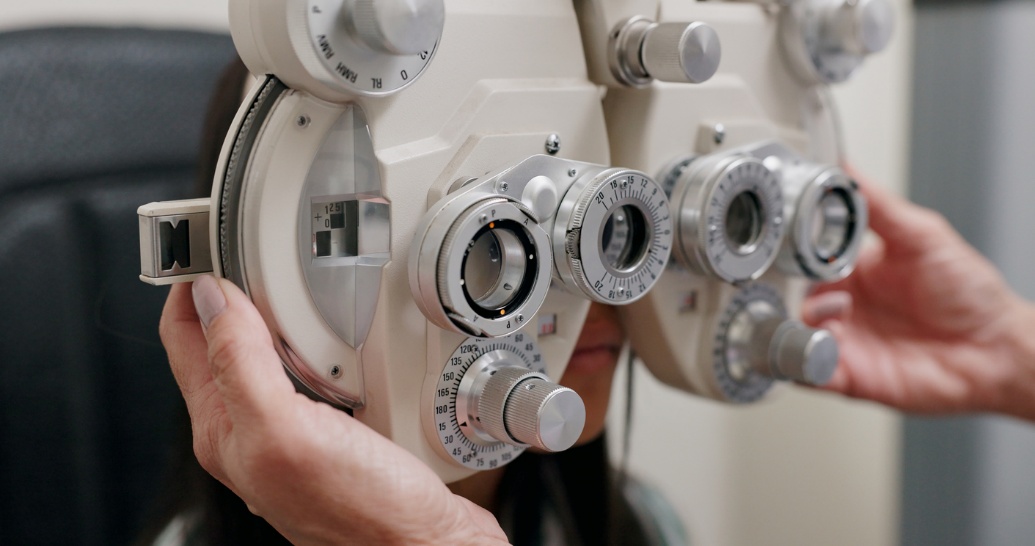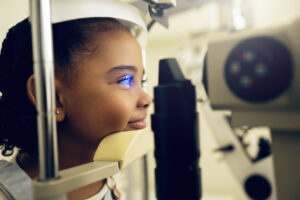Multiple issues can cause blurry vision. Astigmatism and nearsightedness often lead the list, and many people have both without realizing it. At Alice Family Eye Center, we explain exactly what is happening with your eyes and show you how to improve your vision.
What Is Astigmatism?

Astigmatism is when your eye is shaped more like a football than a basketball. This uneven shape bends light unevenly as it enters your eye, which causes your vision to appear blurry or wavy—up close and far away.
People with astigmatism may experience:
- Blurred or fuzzy vision
- Eye strain or discomfort
- Headaches
- Difficulty seeing at night
Astigmatism can occur alongside other vision problems such as nearsightedness or farsightedness. That is why it is so important to get a full eye exam and get the right prescription.
What Is Nearsightedness?

Nearsightedness (also called myopia) means you can see nearby objects clearly, but things far away—like road signs or a movie screen—look blurry. It happens when the eye is a little too long or the front of the eye is too curved.
Signs of nearsightedness include:
- Difficulty seeing road signs or the television screen
- Squinting to see clearly
- Eye fatigue when trying to focus on distant object
How Are They Different?
Think of it like this:
- Astigmatism makes your whole world look a little blurry or distorted, no matter the distance.
- Nearsightedness makes nearby objects clear but faraway things blurry.
Both can cause headaches, tired eyes, or squinting.
Can You Have Both Astigmatism and Nearsightedness?
Yes! People can have both astigmatism and nearsightedness. That means their eyes need help focusing light in more than one way. Luckily, we can fit you with glasses or contacts to correct both at the same time.
Glasses vs Contacts for Astigmatism and Nearsightedness
When choosing between glasses and contacts for astigmatism or nearsightedness, it is important to understand how each option works with your specific condition.
Glasses
- Easy to wear and care for
- Can correct both conditions with special lenses
- Great for kids, adults, and anyone who wants a no-fuss option
Contacts
- Offer a wider field of vision
- Great for active lifestyles or sports
- People with astigmatism need special lenses (called toric lenses)
- Also available for nearsightedness with standard lens types
At Alice Family Eye Center, we help patients weigh the pros and cons of glasses vs contacts based on their lifestyle, vision needs, and comfort preferences. Whether you prefer traditional eyeglasses or modern contact lens solutions, our team will guide you through the best choices for your condition.
Schedule Your Eye Exam in Alice, TX

Ready for clearer vision?
If you have noticed changes in your vision or want to know whether you have astigmatism, nearsightedness, or both, a comprehensive eye exam is the best place to start. We will explain everything in easy-to-understand terms and make sure you get the right solution.
We are proud to serve families in Alice, TX, and surrounding communities with personalized, compassionate eye care. Contact us today to schedule an appointment and let us help you see clearly and comfortably.
Dr. Garza
Alice Family Eye Center
777 N Texas Blvd Alice, TX 78332
361-668-3937





